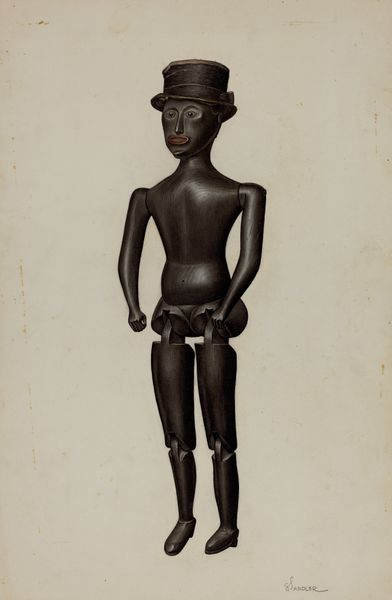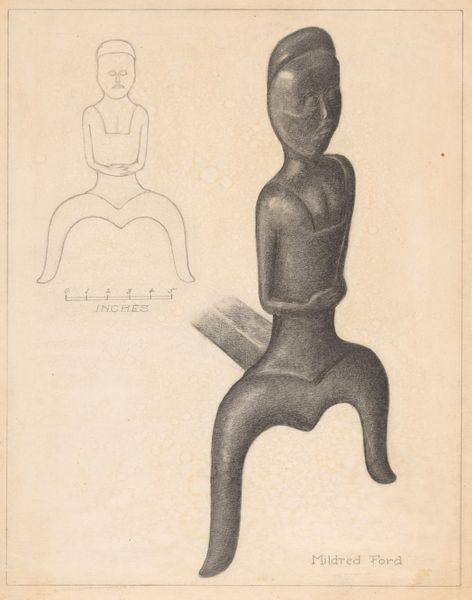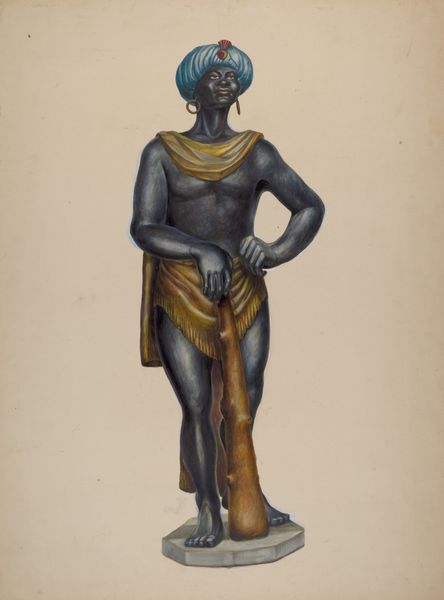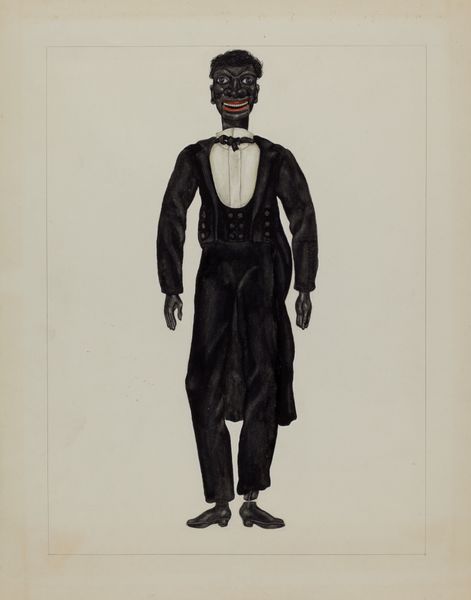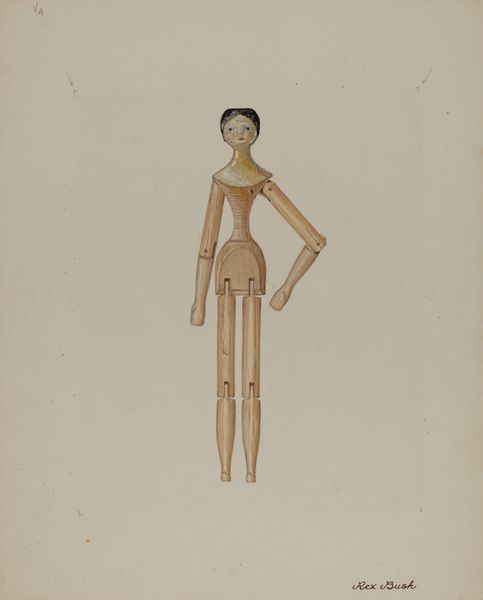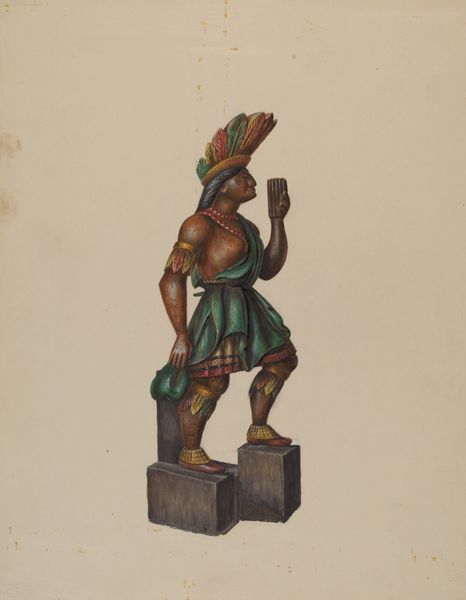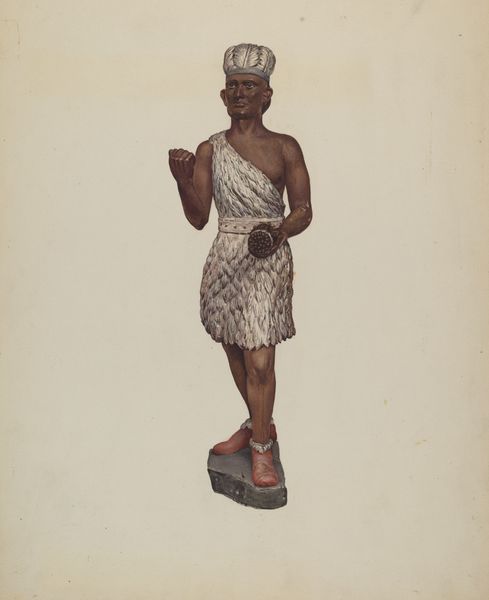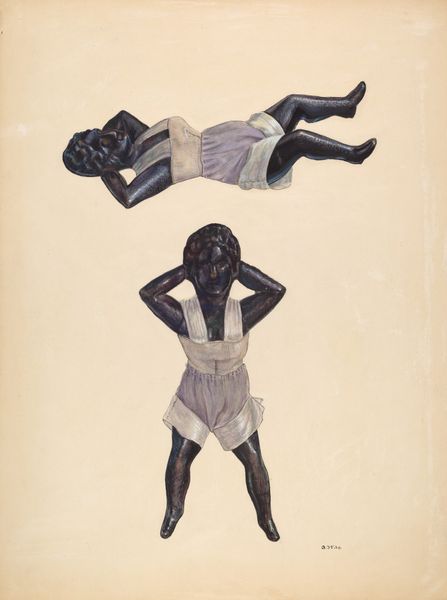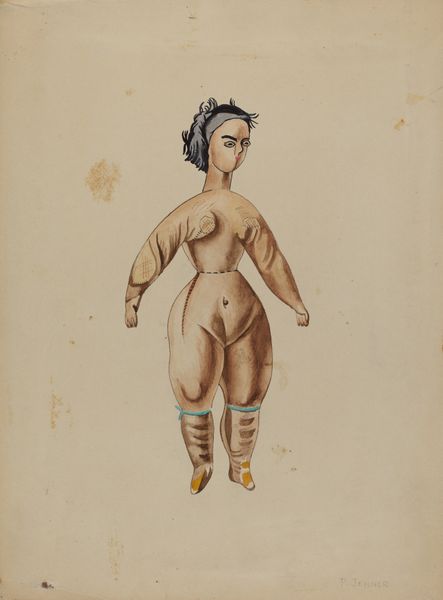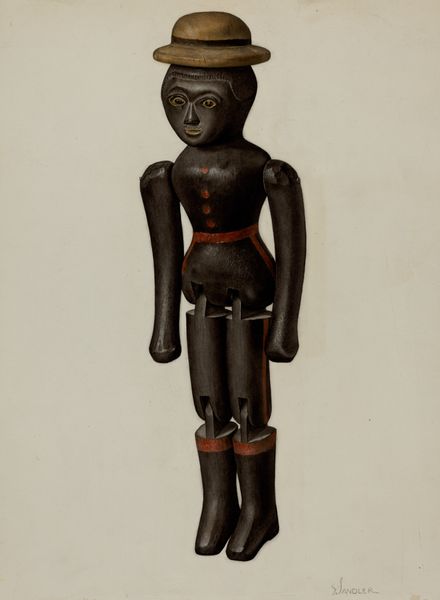
drawing
#
portrait
#
drawing
#
caricature
#
figuration
#
naïve-art
#
portrait drawing
Dimensions: overall: 28.9 x 22.8 cm (11 3/8 x 9 in.)
Copyright: National Gallery of Art: CC0 1.0
Editor: Here we have Arthur Wolfson's drawing "Doll," from around 1937. It's a rather unusual portrait; the stiff pose and segmented limbs make it appear almost unsettling, yet also quite fascinating. How would you interpret this drawing? Curator: The piece presents itself primarily through its formal qualities. Observe the stark contrast between the solid black figure and the empty, off-white background. The composition is severely frontal, emphasizing the flatness of the picture plane. Note the geometric simplification of the doll's form: cylinders for the limbs, a somewhat rounded torso. Editor: Yes, the way the limbs are almost disconnected creates an intriguing effect. Curator: Precisely. The linework is deliberate yet unrefined, contributing to its naïve-art aesthetic. It avoids any illusion of depth or realistic volume. Semiotically, the hat acts as a signifier, lending the figure a somewhat jaunty air, in contrast to the rigidity of its form. Editor: That's interesting. So, the artist used simple shapes to create a complex and somewhat conflicting image. Is there any symbolism or underlying meaning to unpack, or is it purely about the composition and form? Curator: Without knowing the artist's intention, we are limited to a formalist reading. The artwork encourages us to analyse how the figure interacts with the negative space around it, the deliberate use of colour, and the emphasis on line as an autonomous element within the composition. These qualities, combined, invite us to decode the artistic language in isolation. Editor: I see, so we focus on the artistic elements themselves, rather than searching for a hidden narrative. It makes you appreciate how much information can be conveyed through such simple methods. Thanks for your help with this one! Curator: My pleasure. Focusing on such forms provides an invaluable foundation to understanding diverse artwork.
Comments
No comments
Be the first to comment and join the conversation on the ultimate creative platform.
